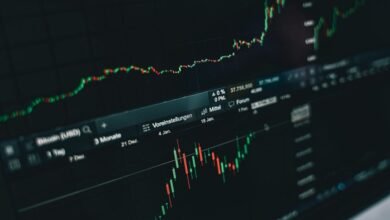8442449538 Smart Investment Strategies for 2025

In 2025, investment strategies are increasingly shaped by rapid technological advancements and data-driven approaches. Emphasizing diversification, innovation, and analytics can mitigate risks and promote resilience amid market volatility. As these elements evolve, understanding how they interact becomes crucial for optimizing portfolios. The challenge lies in integrating new tools effectively while maintaining strategic stability, prompting ongoing evaluation of emerging trends and their long-term implications. The next steps involve examining specific methods to navigate this complex landscape.
Embracing Technological Innovation in Investment Portfolios
The integration of technological innovation into investment portfolios has become an essential component of modern asset management, driven by rapid advancements in artificial intelligence, big data analytics, and blockchain technologies.
This enables sophisticated cryptocurrency trading strategies and supports sustainable investing, empowering investors to pursue freedom through data-driven decisions, transparency, and alignment with environmental and social values.
Diversification Strategies for Market Resilience
To enhance market resilience, investors increasingly recognize the importance of implementing diversified asset allocation strategies that span multiple sectors, geographies, and asset classes.
Incorporating alternative assets and international diversification reduces systemic risk, expands opportunity sets, and fortifies portfolios against localized downturns, fostering greater freedom through adaptive, resilient investment structures rooted in comprehensive, global asset exposure.
Leveraging Data Analytics and AI for Better Decision-Making
How can investors optimize decision-making processes in 2025 amidst an increasingly complex financial landscape?
By integrating quantitative modeling and predictive analytics, investors enhance clarity through data-driven insights. These tools enable precise risk assessment and trend forecasting, empowering autonomous decision-making.
Leveraging AI-driven analytics fosters strategic agility, aligning investments with future market trajectories while preserving individual freedom in portfolio management.
Conclusion
As these innovative strategies unfold, the landscape of investment in 2025 teeters on the cusp of transformation. The integration of AI, blockchain, and big data promises unprecedented insights, yet the true impact remains shrouded in uncertainty. Investors poised to harness these technologies must navigate a complex, volatile terrain where resilience and adaptability are paramount. The question persists: which strategies will ultimately secure sustainable growth amid the evolving digital frontier?






